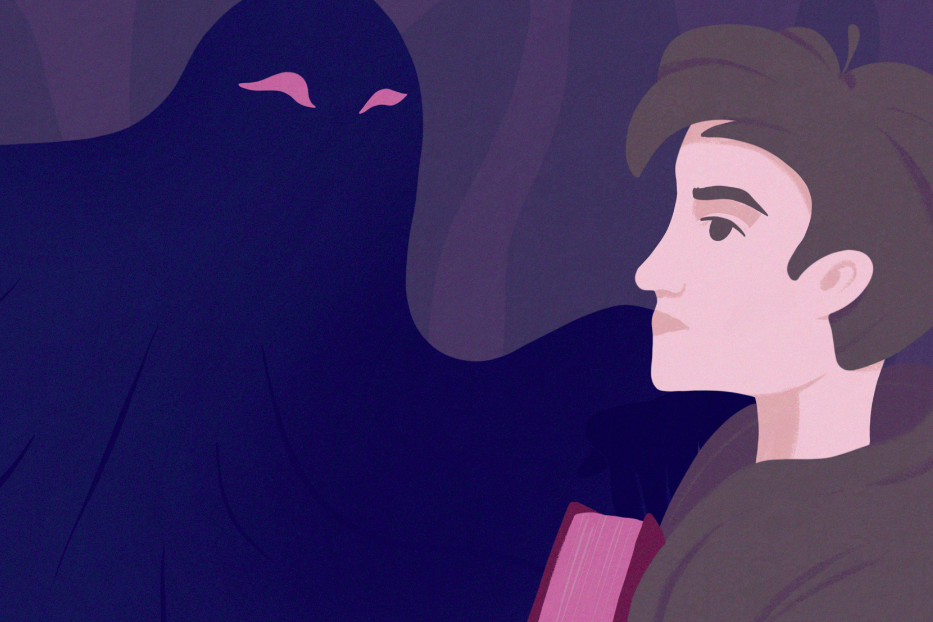The History and Social Study of Science
MIT Prof. Loren Graham on biomedical ethics, challenges of becoming an academic discipline, and the impact of ...

Our attitude towards death have changed with time. In western news media we’re seeing the publication of far more graphic images of death than ever before: there’s a lot of criticism regarding the publication of some of these images. The boundaries on what is and isn’t acceptable in this area are now softer that they were five, ten, fifteen years ago. Why does it happen? Serious Science has asked Dr. Ruth Penfold-Mounce about death awareness events, ethical challenges that we face and how violent death in media affects our behavior.
A taboo is a forbidden subject, and I don’t think that death is actually forbidden. I think, it’s an uncomfortable territory, definitely, and I think there are certain types of a death that are far less comfortable than others, particularly death by suicide. Self-inflicted death is an incredibly uncomfortable territory.
So there is an increasing challenge to talk about death much more openly: we see a lot of that in the news media, popular culture and social media. So a taboo is actually shrinking as more and more people start to become more death-aware. We need to discuss it and think about it, we need to plan for death.
There is a growing movement, a death-positive movement that’s starting to spread around the world encouraging the fact that we need to think about death. Here, in the UK, we have a Dying awareness week every year in May, and during this week there are a huge number of events across the country that are getting people to think about not only their own deaths but also about planning for their deaths, about representations of death and what is and isn’t acceptable. It’s about raising awareness. In some of dying-awareness events, like the Dead Good Festival which I run in York, we attract a lot of individuals who are aged between 60 and 80. These are individuals who have friends who are dying, had partners (husbands, wives) that died and they’re concerned about their own mortality.
I think what’s great about running these events is that you give people a safe space to explore their fears, to overcome them and to feel more confident in dealing with, and planning for, the end of life. Also, things like the death-positive movement and dying-awareness events are really important to be used in order to help children to process these issues at a very young age. To grow up being open about death is a real asset as you grow up into an adult.
I have children and I talk to them quite openly about death and dying. Because of what I study, I’m comfortable talking about that and as a result, my own children are comfortable talking about an issue that a lot of other people find difficult. I would suggest that as adults we need to be talking and sharing with our children and through schools, getting them to engage with matters of death. We are all going to die one day, our loved ones are going to die. I think it’s really important to open these discussions and not hide them away in an attempt to protect children from death. To deny them the chance to understand that life does end doesn’t help children process death itself or plan for death.
There are some TV-shows that are really great in engaging kids in a very direct but appropriate manner. An example would be something like ‘Horrible Histories’: this show helps kids to engage with different historical periods, but actually an awful lot of it is gruesome and engaging with death. There are songs and sketches they are quite funny but are also educational as they are rooted in historical fact. TV-shows like that could be really useful in getting children to engage with notions of death and understanding death in opening conversations. Television shows rooted in research can be useful for engaging kids at a really young age and give parents a safe space to discuss matters of death and end of life.
There is another TV-show in UK called ‘Topsy and Tim’, and it’s about two twins and their various adventures: they’re probably aged about 6 or 7. There are ‘Topsy and Tim starting school’, ‘Topsy and Tim going on holiday’, and there’s one episode s about when Topsy and Tim’s Grandma’s dog dies. What was really great about the BBC when they released this episode was that they released lots of extra information through their website about how parents could support their kids watching this particular TV episode and the issues that were being raised. They were giving trigger warnings so that people would know what they’re about to watch and how to process that. I think, kids TV shows can be incredibly useful for engaging children with matters of death.
‘Horrible histories’, for example, has been researched by social scientists and historians: they’ve taken this information and worked with the media professionals to develop the material that was then released and circulated in the UK and beyond. So social scientists and historians have a really huge role in helping to cultivate these children-targeted media.
I think the media, particularly children’s TV, are becoming increasingly aware that they can’t be speculative in what they’re making. They need to root this back in people who are researching and thinking about these issues. Great progress has been made in the last 10-20 years so that we’re seeing more and more of this. So social scientists are actually working with the media, producing material that’s educational and inspiring for young people.
So in the digital age we’re seeing death in intimate detail and in real time as well: death is no longer distant, death is now incredibly intimate and it’s being shown or revealed as kind of a consumable good. We can consume it for our own entertainment or horrification. We are disturbed by it, horrified by it but it doesn’t stop us from consuming it. As a researcher, I am concerned about the ethical standards of some of the images that are chosen to be published and how they are being published. A lot of moral and ethical debate needs to go to consider what is and isn’t acceptable to publish.
I think the news media are now willing to publish this graphic imagery because they know those images are going to be published elsewhere and they don’t want to lose their readership. The shock content, the shock factor of some of these images of death and suffering and violence will attract people’s attention and will encourage people to consume because they want to be horrified. When these things are published in the newspapers people will consume them. It does evoke a strong emotional response.
There is one particular image that was broadcast around the globe of 3 year old Alan Kurdi who drowned in September 2015 whilst trying to cross the Mediterranean Sea with his family. The Kurdi family were fleeing Syria and trying to reach mainland Europe. The photograph of Alan Kurdi captured him in a red t-shirt and shorts, slumped on a beach on his own. What is really distressing about this particular image is the very fact that it’s a small child who was separated from his parents and drowned. He became a symbol of the risks faced by migrants trying desperately to reach Europe to escape war and persecution. There was debate around whether it’s okay to publish photos such as that of Alan Kurdi in broadsheet newspapers and tabloids however little could be done to prevent the image going viral through social media sites.
Notably with the Alan Kurdi shocking image it represents the fact that once you have seen an image you can’t unsee it. Avoiding such images is virtually impossible for just by logging into arnews website, you can be faced with such images without warning. The consumer is not getting a choice in what they are witnessing. This reflects the need for debate and discussion over where boundaries should lie regarding visually violent and shocking images and what is and is not acceptable in terms of what the public is witnesses.
If we look at representation of death in popular culture as a media form, sometimes we see very graphic, gruesome, sensational forms of death. Game of Thrones is a classic example of that. I certainly know people who watch Game of Thrones but they were self-editing by fast forwarding through the worst bits of violence to avoid graphic visions of death, or watching with other people and getting them to tell them when it’s safe to look.
But what comes to my mind is thinking about the actors involved in the portrayal of this violence and death. It is quite disturbing for them to have to act out these sequences. I was involved in radio programme called ‘Body Count Rising’ which explored these issues and the notion that the corpse count is increasing in TV shows. Actors reported how they were distressed by having to enact a sexual assault being inflicted upon them and the bruises and scrapes they were receiving just through acting out the scenes that resulted in their on-screen death. There is a duty of care towards such actors who may need additional support following such acting sequences
The media really need to think through what images they’re revealing. Are the people identifiable? They need to be able to talk with family members of the dead person and get their permission for the replication of some of these images. I’m thinking of the instances whereby a photograph is taken in the public space of somebody in a car crash, for example, and this is published, the family members will be faced with those images of their dead loved one. A lot more respect needs to go into how these images are selected and why are they being published, and we need to consider who else is going to be affected by the publication of images of the dead. Also, there needs to be more reflection on why people are writing and releasing, publishing this sort of material and whether there are warnings on the content so that people can make an informed decision about whether to expose themselves to that material or not.
There continues to be huge amount of debate about the relationship between media violence and violent behaviour. As a sociologist I’m incredibly skeptical and critical of the idea that being exposed to violence in the media can lead to violent behavior. What’s interesting is that exposure to violent imagery still hasn’t been proven but it remains a popular public perception that there is a link between the media and violent behaviour.
What we can see is that people are consuming more and more violent, death-related material. Our sensitivity to what we’re seeing is going down, we’re finding it okay to see more and more violent materials. For example film ratings which help people anticipate the adult or violent content in movies has changed. Films from the past had higher ratings for less violence and sexual content than now. We’re seeing an increase of graphic violence and death and it’s becoming more acceptable to view these materials at a younger and younger age because it’s becoming normalized to such a large extent. So perhaps it’s not about seeing more violence because of the media we consume, but what we are seeing is that people are less sensitive to what they are witnessing, they’re more okay with watching aggression and violence towards people leading to death. We’re increasingly seeing death as a form of entertainment rather than being disturbed by what we’re witnessing.
It’s hard to prove that there is a link between violence in the media and aggression in society but what we can see is that alongside increasing amounts of violent media forms levels of public fear are also rising. People aren’t necessarily becoming more aggressive or violent themselves, but we are more fearful because of what we’re consuming, we’re more fearful of young people, we’re more fearful of what the stranger in the street might do to us. So I think potentially we’re seeing rising fear because of what we’re consuming, particularly relating to violence and death in the various media forms.
Rising levels of fear is leading to a change in behavior. We’re seeing parents being more protective of their children in relation to strangers, and being more suspicious of people in general. They fear that the child might be snatched like Madeleine McCann or that the child might be abused. We’re seeing women who are changing their behavior, not moving through certain spaces after dark, for example, and sticking with friends, trying to be safe, fearful of being assaulted and attacked. So people change their behavior to protect themselves because of the fear they have, and the media can feed into these fears by what they portray.
Growing fear leads to increased suspicion and division; we don’t trust each other in the same way, other people are seen as a threat. We can particularly see this in Europe where sadly there is fear and often rejection of asylum seekers and immigrants: there is a lot of fear, and I think the media feeds into that fear. There is less empathy, less sympathy for other people’s suffering or fears, less tolerance or support for that. Again, the media can feed into this fear, telling stories about immigrants coming into Europe that could be criminals, that could be a threat to the population. This spiral of fear, aided by media representations causes suspicion and help divide people from each other which is tragic.

MIT Prof. Loren Graham on biomedical ethics, challenges of becoming an academic discipline, and the impact of ...

Communication Scholar Grant Kien on Heidegger, Google glass, and autoethnography

Media scientist Cesar Hidalgo on deciding which city is the safest, the beauty of social housing, and tracking...